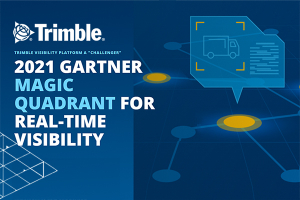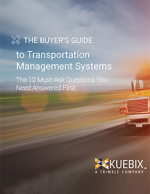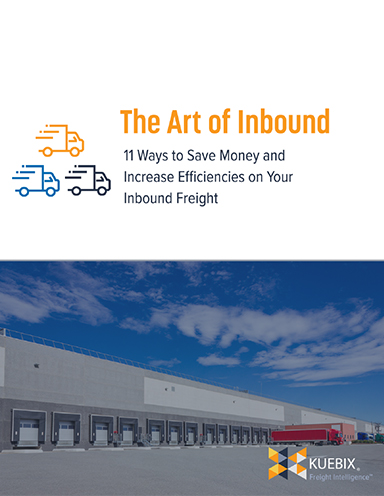The Art of the Inbound: 11 Ways to Improve Your Inbound Shipping Operations
This ebook provides a guide to benchmark your company against best practices in the transportation and shipping industry and helps to put together a strategic approach to capitalizing on the opportunities to manage the “art of the inbound.”
Traditionally inbound shipping costs and operations have been a challenge to control.
Most companies have not developed a comprehensive strategy to manage their inbound freight.
Shipments arrive from their suppliers without a plan to drive the lowest shipping and unloading costs or to consolidate shipments to maximize efficiency at the distribution center.
Additionally, many companies have failed to introduce compliance standards to improve the behavior of their suppliers and efficiently plan the arrivals of shipments to their warehouse facilities.
This results in three endemic problems;
- A lack of consolidated inbound shipments fosters inefficiencies from an excessive number of inbound deliveries and carriers driving unnecessarily high unloading costs.
- Little visibility to the arrival time and frequent changes to inbound deliveries wreaks havoc at the dock and warehouse.
- No standard routing guide and set of compliance procedures opens the door for inefficiencies, driving up the cost of goods and introducing additional problems throughout the supply chain.
The solution is a comprehensive program to take control of your inbound operation through a collaborative system with your suppliers and carriers.
This approach will be based on a dynamic rating and unloading allowance program and procedures that facilitate improved supplier behavior.
This will result in far better visibility to a dynamic environment, the ability to increase inventory turns and an overall reduced cost of goods.
11 Ways to Improve Your Inbound Shipping Operations
- Work in partnership with your suppliers to determine the most cost-effective method to handle each shipment - customer pick-up (CPU) or vendor controlled (VDS).
- Implement a standard routing guide for supplier compliance.
- Get buy-in from the sourcing department on your strategy for supplier compliance.
- Consolidate your LTL carriers to a smaller select group, simplifying yard management and maximizing consolidation opportunities.
- Consolidate inbound shipments to full truckload wherever possible to reduce freight and unloading costs.
- Implement a dynamic rate allowance program for freight costs and unloading expenses with your suppliers.
- Implement a set of automated Vendor Inbound Compliance Standards (VICS) to change supplier behavior.
- Establish penalties for violations to enforce supplier compliance and improve supplier behavior.
- Implement Deduct From Invoice (DFI) capability with your ERP system.
- Implement a supplier portal system that provides immediate visibility and controls for inbound scheduling.
- Capture the analytics for the program to measure savings and find additional areas for improvement.
Download this ebook guide to benchmark your company against best practices in the industry and help to put together a strategic approach to capitalizing on the opportunities to manage the “art of the inbound.”
What’s Related




Favorites





